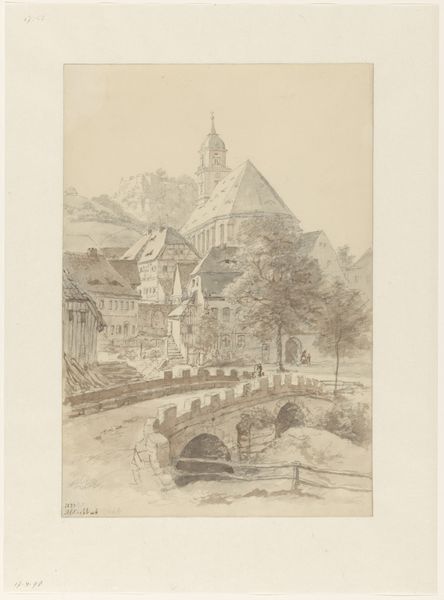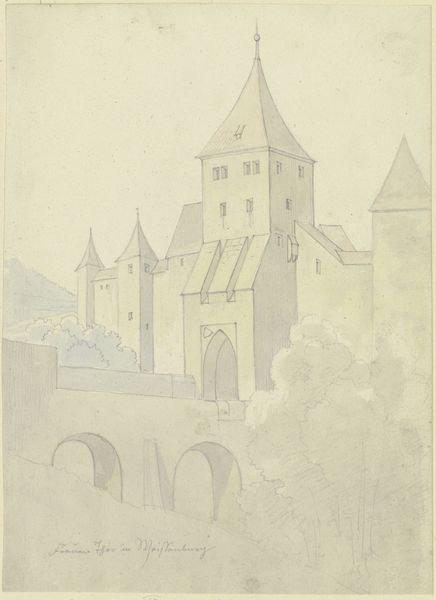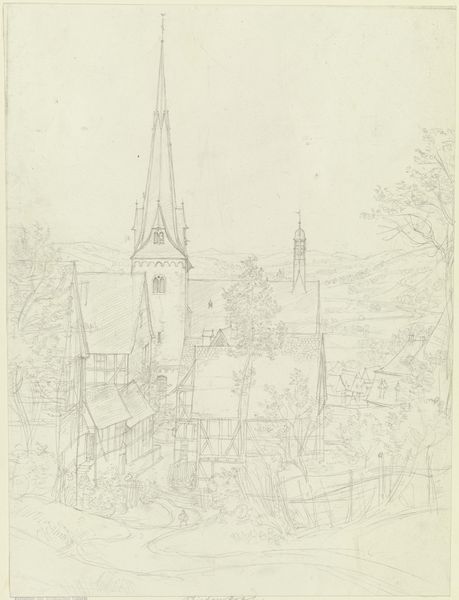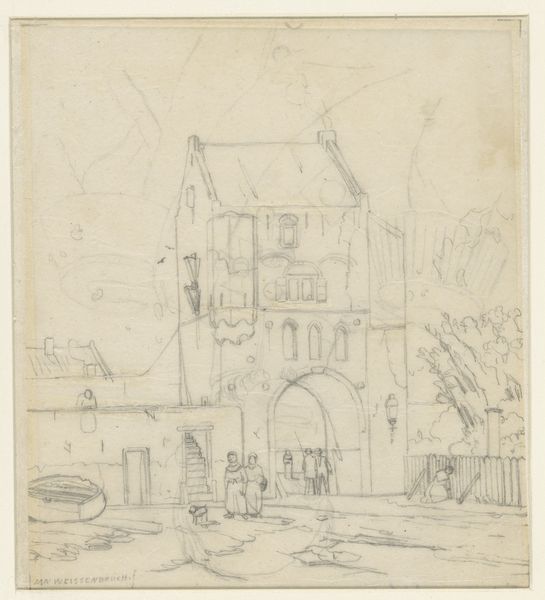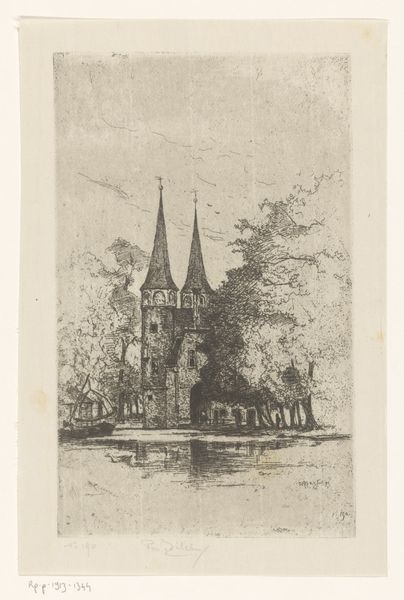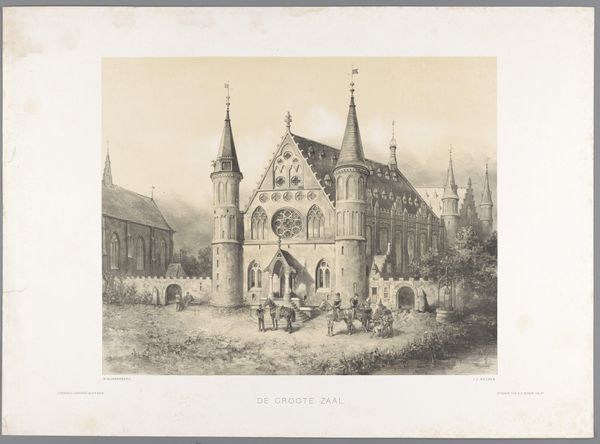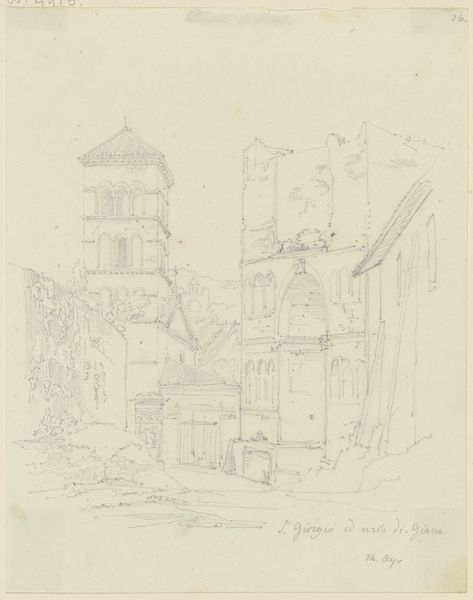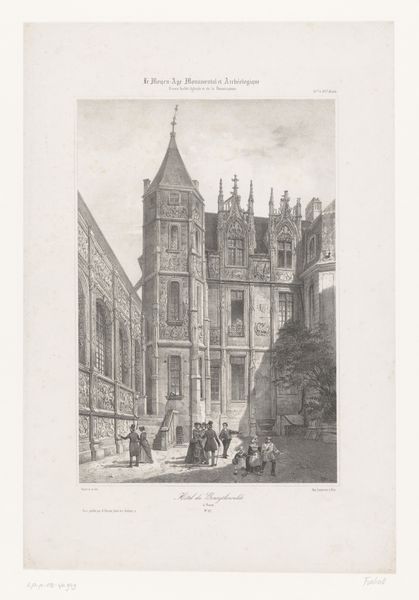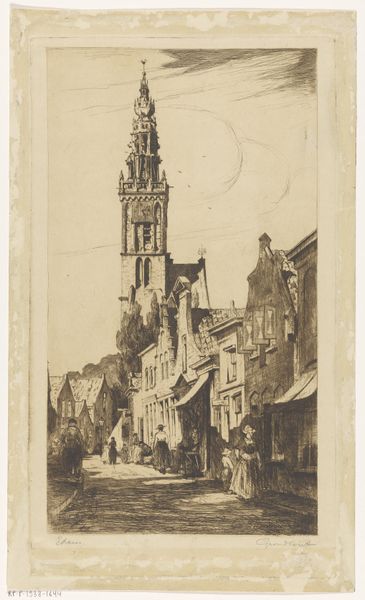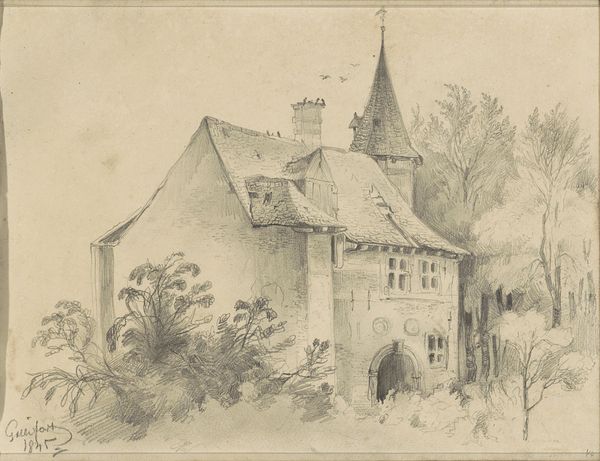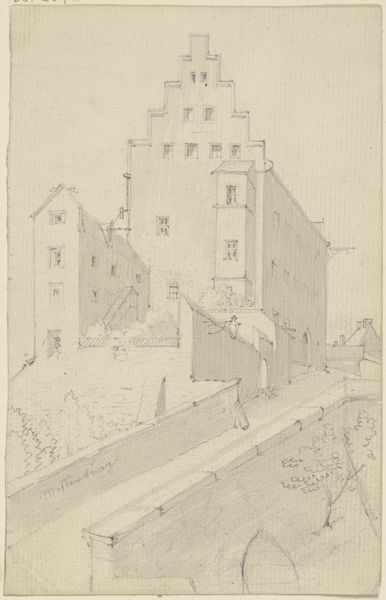
Copyright: Public Domain
Curator: Look closely at Johann Friedrich Hoff's "St. Ursula in Oberursel," created in 1857. It's a pencil drawing, currently residing here at the Städel Museum. What strikes you first? Editor: That almost ghostly lightness. It feels like a half-remembered dream of a village, a tranquil place that time almost forgot. Curator: It definitely has that Romantic era nostalgia baked in. Hoff is idealizing a small-town life framed by a dominant church spire. Note the architecture, which he captures in detail. Editor: The figures bring it to life, though. They look like they're clustered around a well or fountain. Daily life unfolding in the shadow of something immense, both protective and…imposing? Curator: That tension between the everyday and the monumental is central to the imagery of the time, I think. Churches and cathedrals were often featured as a key focal point in architectural landscape pieces. Think about the role of religion in shaping societal values back then. Hoff gives us more than just a landscape, it is the foundation of village identity. Editor: Right, the way civic life centered around these imposing structures. I am interested to note the romanticist trend of framing the city and village people as inherently good in comparison to city life at that time, something akin to, dare I say, Rousseau's philosophies. Curator: Exactly. The sketchiness, the light touch—it avoids anything that jars. We're invited to linger and appreciate. It lacks some grit because it isn’t really about accurately depicting labor or commerce as some paintings may. Rather, it evokes a sentiment, a specific feeling linked to this particular locale. Editor: Almost like an imagined memory. The Romantic artist inviting us into their ideal past. But seeing it today, with our modern perspective, we add a layer of meaning to it—a certain poignancy for simpler times, maybe? Curator: Indeed. Hoff gives us a glimpse into a 19th-century view of the town, filtered through an artistic lens. It prompts reflection about how such places functioned, how people then related to structures of belief, of how sociality came to take shape. Editor: And how, maybe, we project our own longing onto these quiet, meticulously rendered scenes. A whispered question about a world we have never lived in.
Comments
No comments
Be the first to comment and join the conversation on the ultimate creative platform.
